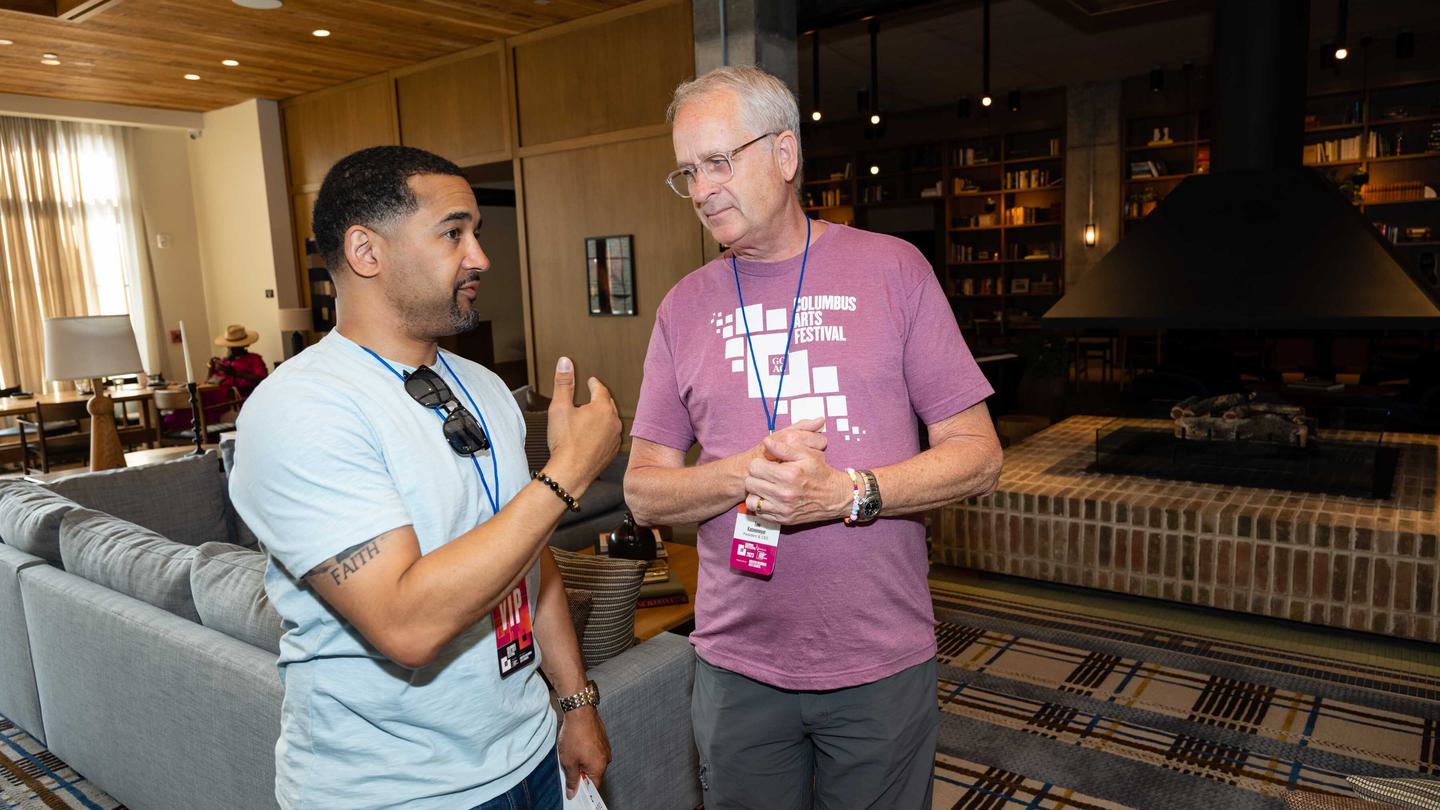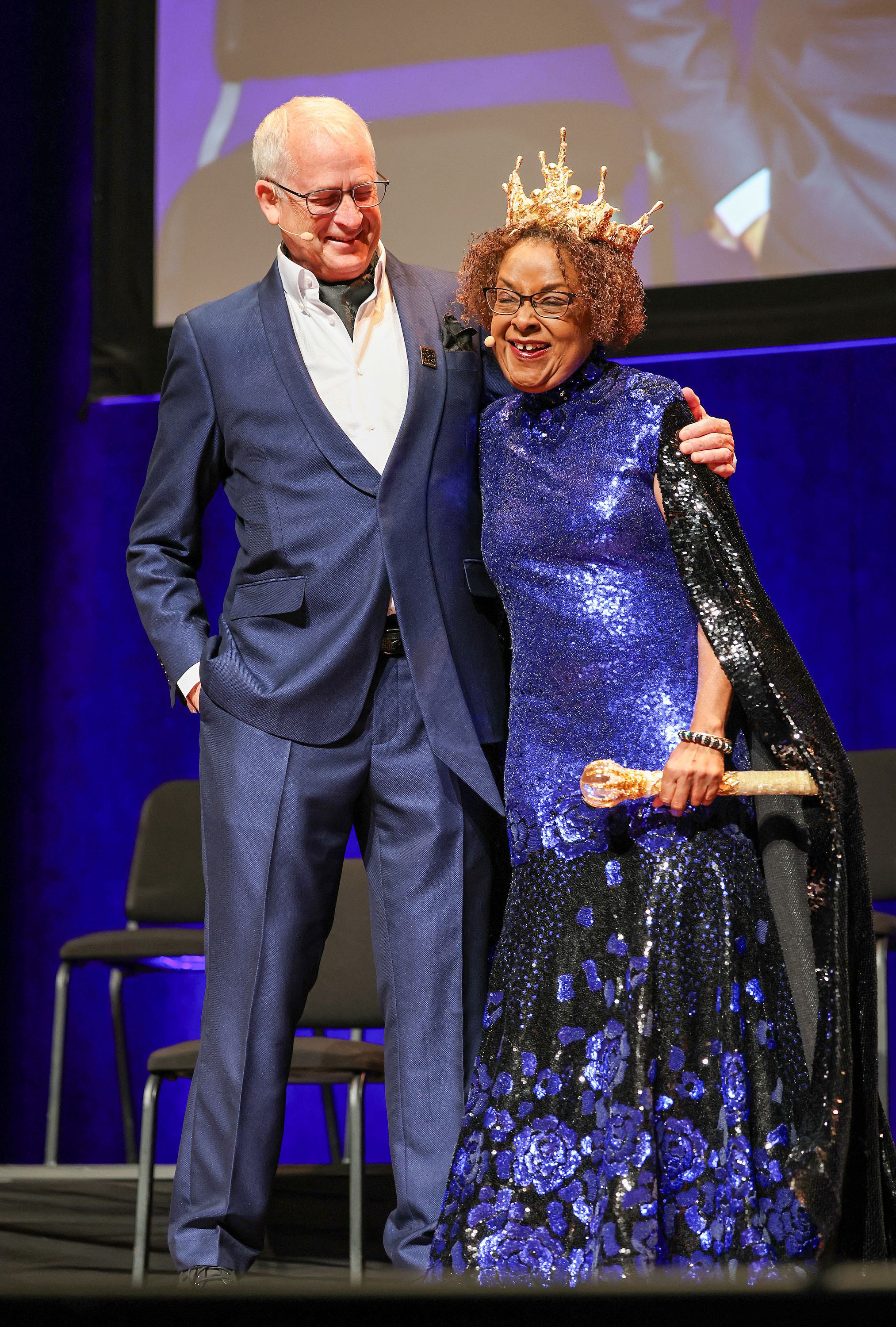
As he prepares for retirement, Tom Katzenmeyer, President and CEO of Greater Columbus Arts Council, reflects on his time at the helm of the organization and what it means to be honored with CCAD’s Denny Griffith Award.
You've led GCAC for more than a decade; what achievements do you feel most proud of?
I’ll start with public funding for the arts. We have increased significantly the public funding coming into the arts, both from the city and the county. Through the bed tax, cultural fee, and Franklin County Commissioners, we have secured multiple new sources of public funding for the arts.
We also have two endowments at the Columbus Foundation, and those permanent endowments fund our Columbus Makes Art Excellence Awards. So that's money that's privately raised that we can use to support the arts, and those have also grown.
I'd also say the number of organizations and the number of projects we’re able to help with this support, all of that has increased dramatically. So I'm very proud of that.
The Spirit of Denny Griffith Award celebrates this legacy of service and leadership. What does it mean to you to receive this, particularly given your personal friendship with Denny.
It has particular significance to me because I knew Denny the entire time he was the president of CCAD. We did a lot together in the community, everything from having a drink from time to time to raising money for the Byer’s building (formerly an auto dealership, now Design Studios on Broad).
At the time, I worked at Limited Brands, and we had a foundation there. Denny calls me up one day because I did community relations, among other things, and he says, “I want you to come down and look at the Byer’s building. It's for sale, and we have some interest in buying it.” And so, of course, I went down.
We walked through that building, the ramp up and everything. There weren't any cars in it then, but we walked the whole building, And obviously Denny had quite the vision for this, to move the college out to Broad Street, which I think was significant in terms of bringing visibility to the campus.
So we had this great friendship, and he said to me, “Will the Limited consider making a million dollar gift toward the purchase of this”. And I kind of gulped, because that's a very large request. We hadn't had an ongoing relationship with CCAD at the time. I thought about it all the way back to the office.
I thought, “how am I going to get this done for Denny?” I could tell he was very passionate about it, and it would be incredibly epic for the school to acquire that property. So I'm driving back, I'm like, “oh, there's no way I can go back and ask for a million dollars. There's just no way, not how it works. There's a lot of people involved in those decisions.” So I had to socialize it for a while at the office. I spent probably the better part of the year socializing that gift, advocating for CCAD and, of course, Denny, and trying to justify why it was important for the college and for the city. In the end, we succeeded.
About a year later, he came out to Limited Brands. He drives out to the office unannounced, and the security people call up and say, “Denny's here to see you.” And I'm like, “okay,” so I go down, and he has a gift for me from one of the students. It's a Kate Morgan. It's called “Wandering.”
That says a lot about him. I had completely forgotten about the whole thing, and he shows up one day with this. So I've had this hanging on my wall for 20 years. And, you know, I'm getting ready to retire, and trust me, this is coming with me.
How would you describe the characteristics of Columbus's art scene today compared to when you took on this role?

This existed somewhat back then, but today we have incredibly talented artists across many disciplines – visual artists, musicians, dancers, actors, filmmakers, fashion. The culinary arts are beginning to work their way into this whole mix. So, the talent here now is of the utmost quality amongst the artists and performers in every discipline. Hopefully, GCAC has raised the level of visibility of that cross-disciplinary excellence in our marketing programs. Obviously, CCAD churns out a lot of those people in and of itself, so that's a good thing. It’s really brought fashion more to the forefront with the annual fashion show, which got started out at Limited Brands back in my era there.
So, first and foremost, I think we’ve got some tremendous leaders and a lot of new leaders in the arts that work together, collaborate together. We had a great example of that on Valentine's Day weekend. It was “West Side Story” performed at the Ohio Theater. It was a collaboration between CAPA, the Columbus Symphony, Opera Columbus and BalletMet, and it sold very, very well. So four organizations coming together to create this phenomenal experience, and that type of collaboration puts the arts in a sort of epic place, an apex place in the city right now.
And there's more things like that coming in the balance of the year. So I also think the arts offering has improved.
Going forward, I think you're going to see over the next five years an explosion of public art in the city. We're working on that plan for the county and city right now, and that'll launch later this year. We will see more public art pieces, not just downtown, but around the city and out into the neighborhoods. We’ve done a lot of work – having public meetings on that, doing public polling on that – and around 90% of the people in Columbus would like to see more public art.
Why do you believe collaborative efforts are crucial for the arts?
I think collaboration equals excellence. Really, I think that's what it means. And it’s a very unique opportunity for a ticket buyer to go to something where multiple arts organizations are involved or are performing. It’s a high visibility event, a joyful event.
I think when you have these very talented leaders of these different organizations, and they're creative people, it's not the easiest thing to do to bring everybody together on stage. So, you know, there's different personalities involved. So the herculean challenge of that is one part of it, but the outcome of it really is excellence, and we've done it in the past. There's another thing hanging on the wall in my office from The Flood which was another incredible collaboration between Opera Columbus and ProMusica, which told the story of the 1913 flood in Columbus’ Franklinton neighborhood.
Anytime we can do something like that, come together like that and show the city that we can work together, perform together, market together, celebrate together. It's a good thing.
You mentioned securing steady funding sources as one of your most significant achievements. How does this funding shape and sustain arts going forward?
Take the cultural fee; it's a 5% user fee. So everyone going to a large performance in the City of Columbus will pay it, and it goes right back to the arts. It's not going somewhere else. GCAC is entrusted with stewarding that money and getting it back out to the arts organizations and artists.
We create jobs with this. We build a more vibrant community with this funding, which, in turn, drives investment and other businesses, like restaurants, hotels, anything downtown or where these arts organizations are headquartered.
There are also all these positive health and mental health benefits that come from the joy of participating in the arts, and that's being driven by that cultural fee and the bed tax money and the direct appropriation that we get from the Franklin County Commissioners. We’re improving community wellbeing, and we’re grateful for the funding and what it allows us to create.
Let’s talk about your legacy. What do you want it to be? What do you envision for GCAC going forward?
You know what? I hope whoever comes in here takes this and runs with it, takes it to the next level with public art and finding new funding sources for public art and just keeps the collaboration going.
Funding the excellence of the individual artists is important to me. We'll fund more than 1,500 artists this year. When I started, I think the number was 100, and we're one of the only cities that does that. If you're a working artist, you can get $1,200 from us this year for supplies, professional development, if you need to create a website, use the money toward that.
So, keeping the support going and taking it to the next level. We’re leading in Ohio right now. But there’s a lot of things we could do. And a focus on space. We need to work on our facilities here now. Artists need spaces. All these artists that CCAD is graduating, we need rehearsal spaces for them. We need studio spaces for them. So there's going to be a focus on that. There’s a lot of empty buildings – what can we do with them to support artists?
